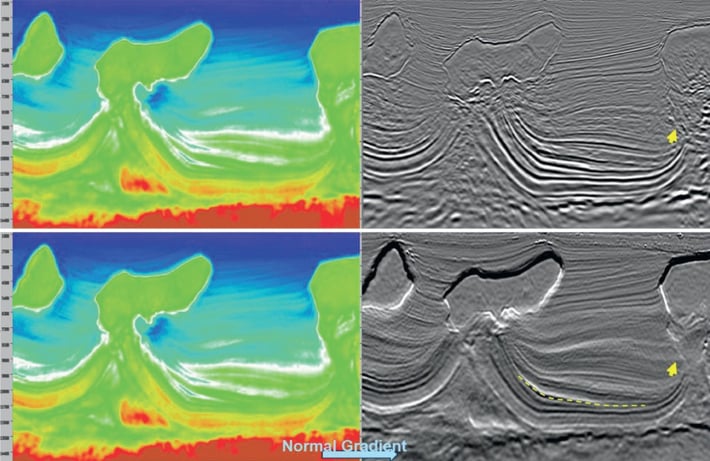First Published: First Break, Volume 39, December 2021.
In this article, TGS Seismic Imaging experts compare and contrast Least Squares Reverse Time Migration (LSRTM) and Full Wave Inversion (FWI) and conclude that the process of generating the FWI imaging essentially amounts to a nonlinear, data-domain inversion
Summary
Least Squares RTM (LSRTM) is a powerful inversion-based imaging algorithm that minimizes the data misfit between observed seismic recordings and forward-modeled synthetic data. The algorithm, which can be implemented in either data or image domains, carries a fundamental limitation because it is based on a linear inversion theory which cannot accommodate velocity refinement as part of its model update process. Successful application of LSRTM, therefore, requires highly accurate velocity information, and if the velocity model is in significant error, modeled events will not be aligned kinematically with the observed data, and the algorithm will tend to produce unsatisfactory results.
FWI is another inversion-based algorithm that enjoys widespread industry use. Unlike LSRTM, FWI poses its inverse problem within a non-linear framework whereby it updates the velocity model and associated wave paths throughout its iterative process, gradually aligning modeled events with observed events. With the recent convergence of FWI and LSRTM methodologies, FWI is not only being used as a velocity update tool but also as a direct imaging tool, thereby achieving two key imaging goals, namely refining the velocity model and deriving a better-quality seismic image. The latter process, which is known
as ‘FWI imaging’, has recently been gaining a lot of industry attention as it offers the possibility of high-quality imaging along with workflow simplification.
This article compares and contrasts LSRTM and FWI. We conclude that the process of generating the FWI-imaging essentially amounts to nonlinear, data-domain inversion. This recognition facilitates a ready comparison against the data-domain form of LSRTM, the latter being a linear, data-domain inversion.

The left figures are the velocity model. The upper right is the LSRTM image and the bottom right is the FWI image.
Download the full article using the link at the top of this page.

